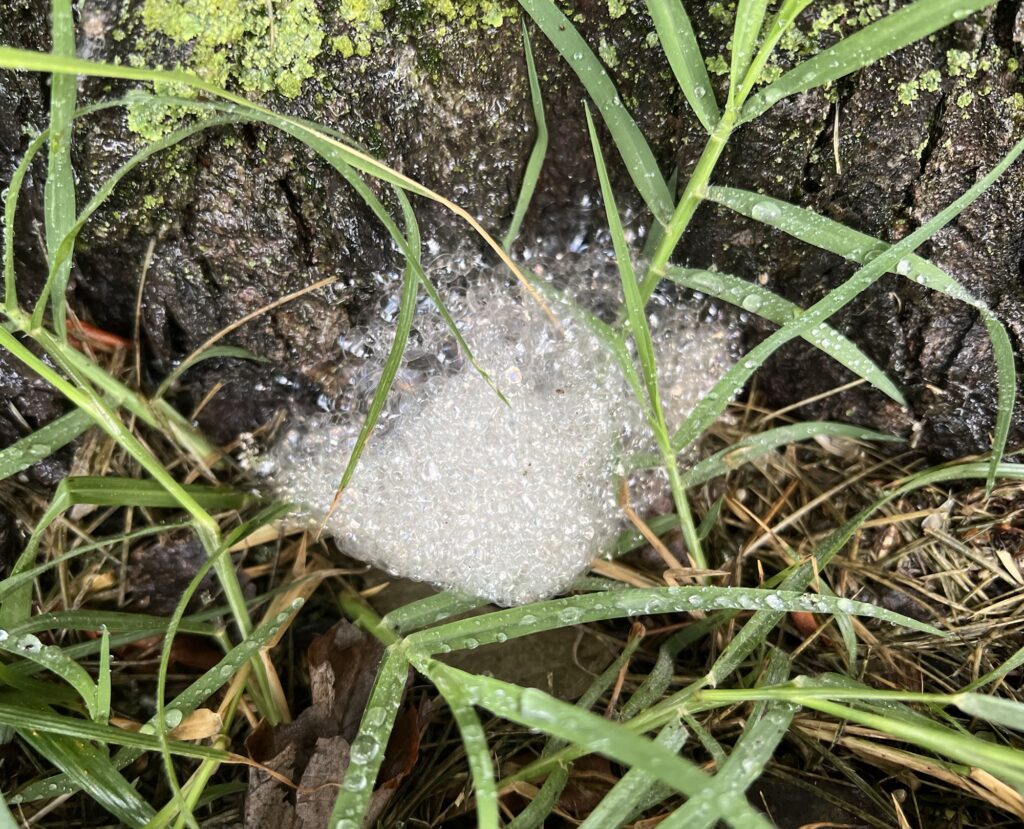
Just short post today, but what I think is an interesting one, nonetheless. Always enjoying new discoveries, I happened upon something I’d not seen to date here: what looked like a clump of soap bubbles at the base of one of our maple trees. Have you seen this before?
Since we don’t use chemicals on our property, finding soap caused me some consternation…particularly since it was in our front yard. How could soap have gotten there?
As I examined it more closely in the dawn light, it was clear to me that it really was a soap-like substance – the collection of tiny bubbles was slightly iridescent and looked firm. I didn’t poke my finger into it, but I did take a photo so I could review it later, after the morning chores were complete.

Once I had a chance, I searched online to see if others had encountered this phenomenon. I was immensely relieved to read information provided by Erik Draper at The Ohio State University that explained that this actually was a natural “soap” created by certain environmental conditions. As he explains in the article, the soap is created by naturally-occurring dust (salts) and plant acids that mix with water, such as after a heavy rainfall, and are whipped into bubbles by their trip down the tree (called “stemflow mixing”, a process that, at least to me, sounds a bit like slow-motion whitewater rafting over bumpy bark and other obstacles the chemicals encounter). The end result: bubbles at the base of the tree.
We’ve recently experienced thunderstorms and heavy rain after a period of dry, hot weather – just the conditions that could potentially create this kind of tree foam. Fortunately, it seems that these bubbles aren’t harmful to the tree or to the environment, so I’ll just leave it to be washed away by the next deluge (update: it had already disappeared just a few hours later).
Even on gray, wet, gloomy days, Nature can surprise with the whimsical – and offer an opportunity to learn more about its wonders. Now I know that the trees are blowing bubbles when I’m not watching.
